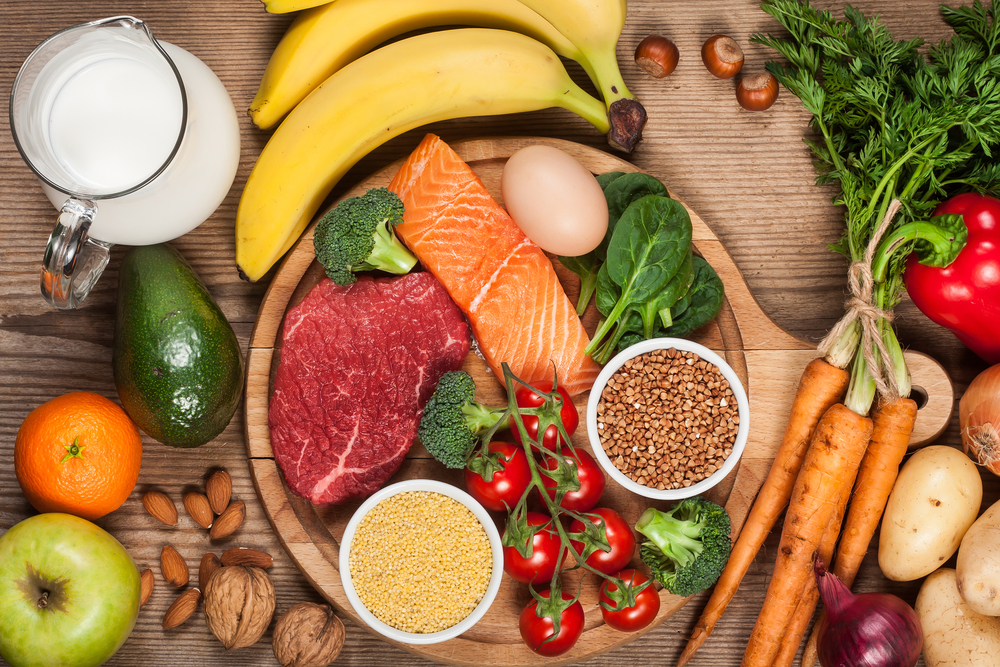High Protein Meals Boost GLP-1 Hormone Known to Suppress Appetite in PWS Children, Study Finds

High protein meals induce the secretion of the insulin-stimulating hormone glucagon-like peptide 1 (GLP-1) in children with Prader-Willi syndrome (PWS), suggesting that these kinds of meals may help suppress appetite, a pilot study has found.
The study, “Dietary macronutrient regulation of acyl and desacyl ghrelin concentrations in children with Prader‐Willi syndrome (PWS),” was published in the journal Clinical Endocrinology.
A chronic desire to overeat, or hyperphagia, and progressive weight gain are hallmarks of PWS. Compared to healthy children, those with the disorder have higher levels of the hormone ghrelin — which stimulates appetite, food intake, and weight gain.
Ghrelin circulates in two forms: an acylated form (AG) that stimulates appetite, and a desacylated form (DAG) that helps balance blood sugar levels. The ratio of AG to DAG concentrations in the blood plays an essential role in maintaining metabolic control.
Both AG and DAG levels are suppressed by food intake, and the rate and magnitude of this change depend on the composition of meals. Meals high in carbohydrates generally suppress ghrelin more than meals high in fat.
However, how food intake affects AG and DAG levels in PWS patients has not yet been examined.
To address this, researchers at the University of Alberta, in Canada, along with collaborators in the U.S. designed a study to explore the effects of varying dietary macronutrient composition (fat, protein, and carbohydrate) on appetite-regulating hormones in children with PWS.
The study included 10 children with a median age of 6, along with seven healthy children (median age 12) as controls. Eight patients were taking growth hormone at the start of the study.
Children visited the study site three times after an eight-hour fast, and at each visit the team collected blood samples, and measured height and weight. Participants were randomly assigned to eat one of the three weighted breakfast meals at each visit: a standard meal, a high-protein, low-carbohydrate meal (HP-LC), and a high-protein, low-fat meal (HP-LF).
The standard meal contained 55% carbohydrate, 30% fat, and 15% animal protein. The HP-LC meal consisted of 40% carbohydrate, 30% fat, and 30% protein, and the HP-LF meal was 55% carbohydrate, 15% fat, and 30% animal protein.
Selected foods represented typical foods consumed by children, including sandwiches with bread, ham, cheese, and mayonnaise, along with milk mixed with chocolate syrup. Ingredients were adjusted for each meal type. The period between test meals was two weeks.
Blood samples were collected every hour for four hours after each meal and tested for AG and DAG, glucose, insulin, along with GLP-1 — which suppresses appetite — and peptide tyrosine tyrosine (PYY), which decreases appetite and makes people feel full after eating (satiety).
In children with PWS, levels of AG and DAG significantly decreased following all meal types over the four hours. The rate and magnitude of AG and DAG suppression were comparable among all three meals. No differences were seen in the ratio of AG to DAG in response to the HP-LC and HP-LF meals.
Likewise, in healthy children, AG and DAG concentrations decreased following all three meal types, and the rate and magnitude of AG and DAG suppression were similar after each meal. Again, no differences were found in the AG to DAG ratio.
While glucose responses were similar in children with PWS children after all three meals, insulin concentrations were significantly higher following the HP-LC meal than with the standard meal after one and two hours. Also, the HP-LF meal stimulated a higher release of insulin after one hour than the standard meal.
GLP-1 levels were higher in PWS patients two and four hours after the HP-LC meal, and at four hours after the HP-LF meal compared to the standard meal. No differences were found in PYY responses.
Compared to healthy children the ratio of proinsulin (insulin precursor) to insulin was significantly higher in the PWS group, which “suggests impaired processing of proinsulin,” the scientists wrote.
In healthy children, blood glucose levels increased more at one hour after the HP-LF meal than the standard and HP-LC meals. The HP-LF meal stimulated a higher release of insulin after one hour compared to the standard meal. No differences were identified in GLP-1 and PYY responses following each meal.
Finally, appetite scores were measured using a questionnaire in healthy children immediately before every blood draw. Results showed that average appetite scores were lower one hour after all three meals. Ratings for appetite were lower after the HP-LC meal compared to the other two meals at hours three and four.
“Higher protein meals stimulated greater increases in GLP-1 concentrations in children with PWS,” the researchers wrote. “This could provide a favorable influence on biomarkers of satiety and, possibly, degree of hyperphagia, in PWS.”
“These findings may be relevant to clinical outcomes of patients with PWS; testing this hypothesis will require long-term multi-center studies with larger sample sizes to assess the longer term effects of high protein intake on food intake, metabolism and weight gain,” they added.






